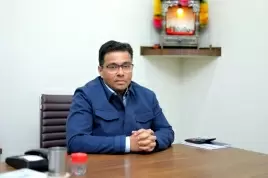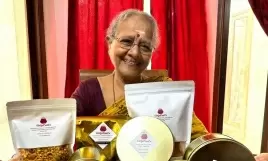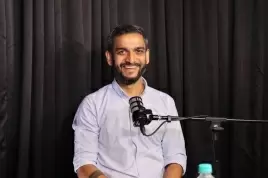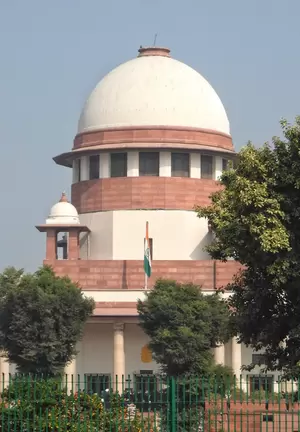‘They had trekked a long way and they wanted to settle down’
15-August-2015
Vol 6 | Issue 33
Ashoka Gupta (1912-2008) was truly a Renaissance Woman, who belonged to a generation that grew up in colonial Bengal. Not only did she witness the partition of the country in 1947, she responded with all her energy in addressing the tide of human misery it brought in its wake, as refugees poured into West Bengal from what was then East Pakistan.
This narrative from her first-person memoir of the conditions in Mana camp located in what is now Chhattisgarh provides a rare glimpse of how life had to be built from scratch for thousands of tired, hungry, traumatised people, and captures the empathy with which Gupta related to the refugees.
Excerpted from A Fighting Spirit: Selected Writings of Ashoka Gupta, compiled and edited by Sarmistha Dutta Gupta and Narayani Gupta (Niyogi Books).
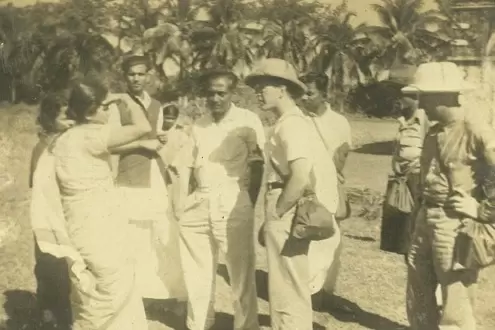 |
|
Ashoka Gupta (left) in Noakhali. Gupta's recollection of Noakhali pre-partition riots remains an important eyewitness account because she had worked under Gandhi's close supervision (Photo Courtesy: Narayani Gupta\WFS)
|
It is hardly necessary to recall the events that followed the partition of India in August 1947 – which brought almost the entire Hindu and Sikh population of West Pakistan to this side of the border. The exodus was instantaneous.
The refugees left their ancestral homes and villages so suddenly and so quickly, and under such difficult conditions accompanied with violence, that they could hardly bring with them even their personal belongings.
Relief camps were opened where lakhs of displaced persons received free rations and clothing, free medical facilities and free education for their children until these refugees were gradually dispersed to their rehabilitation centres.
In the case of East Pakistan, the really big influx started from East Bengal only after the riots of 1950, and the refugees poured into India in a steady stream until 1957, when the new law of migration prevented the refugees from crossing the border without a migration certificate.
By this time, according to government figures, over 40 lakhs of people had crossed the border from East Pakistan. Out of this huge population (according to government records), only 3.5 lakhs sought assistance from the government and were accommodated in various camps and Homes mostly in West Bengal…
The Government of India decided that 10,000 such families would be absorbed in West Bengal and the remaining 35,000 sent to rehabilitation sites in other parts of the country.
As there was no large tract of land available anywhere in India to accommodate such a large number of people, it was decided that the Dandakaranya forest area be developed, and the bulk of the refugees who were mostly agriculturists who had lost their land in East Pakistan, be resettled there. The area of Dandakaranya is approximately 77,670 sq kms, spread over the districts of Koraput and Kalahandi in the state of Orissa and the district of Bastar in the state of Madhya Pradesh…
(Many) refugees who had been sent directly from the East Pakistan border to Dandakaranya were kept temporarily in a transit centre at Mana, which is 9 miles off Raipur in the district of Raipur, Madhya Pradesh, and is 150 miles from the Dankaranya region...
Mana, once an army camp and abandoned after the last war, is a large treeless stretch of ‘morrum’ land, unfit for agricultural purposes. Mana is extremely hot in summer. There is great dearth of water. The possibilities of subterranean water resources were yet to be explored when the new migrants began to arrive in an endless stream. There were two big halls at Mana which had previously belonged to the army and the new arrivals had only those halls to be accommodated in.
The concentration of such a large number of families belonging to different walks of life in a small area raised many social and health problems. Under the existing system, these families were received at the Raipur Railway Station, brought in Project buses and trucks to Mana transit centre and to other transit centres which were opened recently in the vicinity.
After their names and family details had been entered in the camp registers and preliminary medical check-ups, vaccination and inoculation been done, they were either accommodated in tents or in semi-pucca bamboo huts. They were supplied with one cooked meal in the community kitchen on the day of arrival and given dry rations or a maintenance grant so as to enable them to make their own cooking arrangements…
Among the new migrants who had arrived in the Mana transit camps were a considerable number of families who fall under the Permanent Liability category. Up to April 30, 1964, about 798 families without any adult male member had arrived and there were 105 families who were infirm, ill and disabled.
There were also families who comprised old and weak parents with minor children… Apart from these families who are in the Permanent Liability category most of the families amongst the new migrants had three or four small children…
The crowds that we came across in camps were groups of exhausted, tired and baffled people. They had trekked a long way and they wanted to settle down and strike root somewhere.
They realised that this was a temporary phase – these were transit camps – but they could not understand why some homestead plots should not be allotted to them which they could then call their own and pay for in instalments, side by side with the provision of work…I have seen how, with the onset of the monsoon, these people cry for the land they left behind and which they feared would not be cultivated this season.
They had left all they had, but many families have carried bundles of seeds of all kinds in the hope of seeing a new life grow out of them. Wherever they went, be it in tents or bamboo shacks or hutments, a patch was dug up in no time and some of these seeds sown.
Men and women were hungry and eager for land where they could sow their seeds which they felt was their only asset brought from their ancestral land. I have seen women work day and night for their families and for their tiny little households in tents, and then for their little kitchen gardens….
A well-planned rehabilitation programme with a sympathetic approach is awaited now, so that these uprooted people may regain a sense of security.
(Excerpted from A Fighting Spirit Selected Writings of Ashoka Gupta, compiled and edited by Sarmistha Dutta Gupta and Narayani Gupta; Published by Niyogi Books; Pages: 192; Pp: Rs 299)- Women's Feature Service




